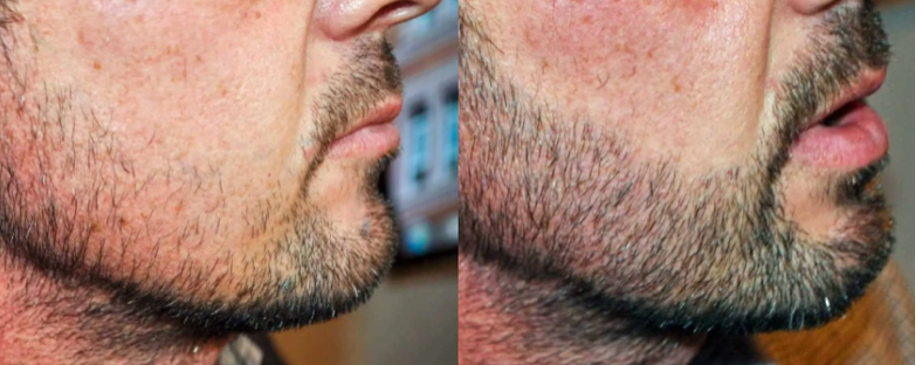
If you’ve been considering a beard transplant, you’re probably curious about many aspects of the procedure, including whether it leaves a scar. This article will provide a comprehensive understanding of beard transplants Turkey, the potential for scarring, and how to minimize unwanted marks.
Why Do People Opt for Beard Transplants?
Many individuals undergo a beard transplant for various reasons, including genetics, scarring from accidents, or the desire to have a fuller beard. The desired beard style’s psychological and aesthetic benefits can significantly boost self-confidence and personal satisfaction.
The Beard Transplant Procedure
The beard transplant process involves several steps. Initially, you will consult your surgeon to discuss your goals and the best approach. On the day of the procedure, the surgeon will extract hair follicles from the donor area and implant them into the desired beard area. After the procedure, you’ll need to follow specific care instructions to ensure proper healing and optimal results.
Does a Beard Transplant Leave a Scar?
Like any surgical procedure, a beard transplant can leave scars. The extent and visibility of scarring depend on several factors, including the technique used, the skill of the surgeon, and your body’s healing process. Understanding these factors can help set realistic expectations.
Scarring with FUE Technique
FUE involves extracting individual hair follicles, resulting in tiny circular scars. These scars are usually less noticeable and can be hidden by surrounding hair. FUE is often preferred for its minimal scarring, especially if you plan to keep your hair short.
Scarring with FUT Technique
FUT involves removing a strip of skin from the donor area, which is then dissected into individual follicles. This technique leaves a linear scar, which can be more noticeable, especially if your hair is short. However, skilled surgeons can minimize the visibility of this scar.
Minimizing Scarring
Techniques Used by Surgeons to Reduce Scarring
A skilled surgeon employs various techniques to minimize scarring during a beard transplant. These include:
- Precise Follicle Extraction: Using fine instruments and careful methods to extract follicles reduces tissue damage and scarring. The FUE technique, in particular, is designed to leave minimal scars by extracting individual hair follicles.
- Strategic Placement of Incisions: Surgeons can place incisions in less noticeable areas or along natural hairlines to reduce visible scarring. This strategic placement ensures that any scars blend seamlessly with existing hair.
- Advanced Closure Techniques: For FUT procedures, surgeons use advanced techniques like trichophytic closure, which allows hair to grow through the scar, making it less noticeable.
- Use of Smaller Punches: In FUE, the punch size used to extract follicles can influence the extent of scarring. Smaller punches create smaller wounds, which heal more quickly and leave less noticeable scars.
Scar Treatment Options
Medical Treatments for Scars
If you experience noticeable scarring, various medical treatments can help improve the appearance of scars:
- Steroid Injections: These can reduce inflammation and flatten raised scars. They are typically administered over several sessions.
- Laser Therapy: Laser treatments can improve the texture and color of scars. They work by removing the outer layer of skin and stimulating collagen production to heal the underlying skin.
- Microneedling: This treatment involves using a device with fine needles to create tiny punctures in the skin, stimulating collagen production and improving scar texture.
Home Remedies and Over-the-Counter Products
For milder scars, over-the-counter products and home remedies can be effective:
- Silicone Gels and Sheets: These products create a protective barrier over the scar, keeping it hydrated and reducing its appearance over time.
- Topical Creams and Ointments: Products like vitamin E, onion extract, and aloe vera can promote healing and reduce scarring.
- Massage Therapy: Regularly massaging the scarred area with oil or cream can help break down scar tissue and improve the skin’s texture.
Cosmetic Procedures to Reduce Scar Appearance
For more persistent or severe scarring, cosmetic procedures offer additional solutions:
- Chemical Peels involve applying a chemical solution to the skin. This solution exfoliates the top layers and encourages new skin growth, which can reduce the appearance of scars.
- Dermabrasion: This procedure sands down the surface layer of the skin, promoting the growth of new, smoother skin.
- Fillers: Injectable fillers can raise depressed scars, making them less noticeable and improving skin texture.
What to Expect During Recovery
Recovery from a beard transplant typically involves some redness and swelling, which subsides within a few days. Scabs will form and fall off naturally. It’s important to manage your expectations, as the final results, including the appearance of scars, may take several months to manifest fully.
Beard transplants offer a viable solution for those looking to enhance their facial hair. While scarring is a consideration, understanding the procedure and choosing a skilled surgeon can greatly minimize its impact. You can achieve the beard you’ve always wanted with proper care and realistic expectations.





